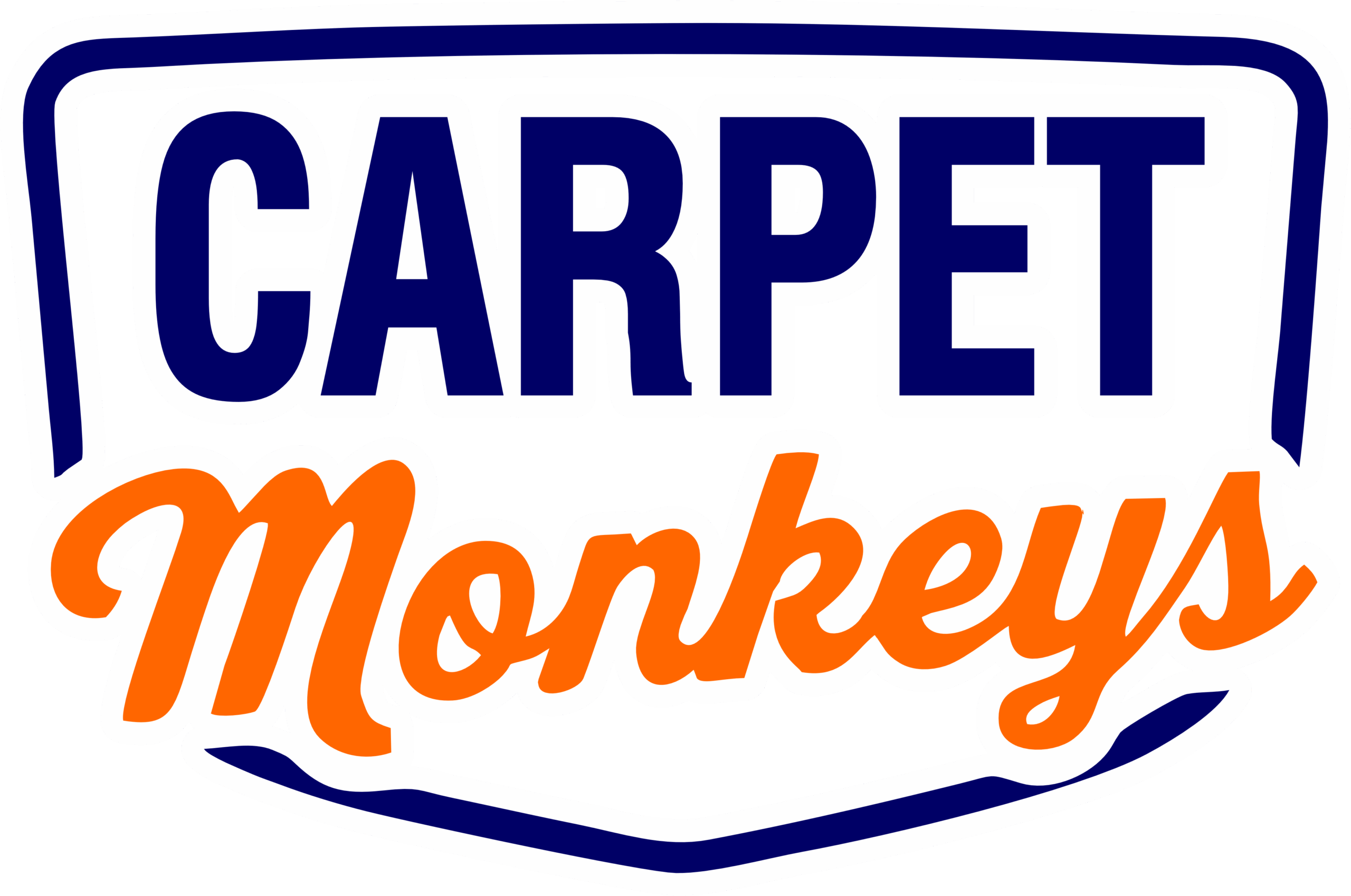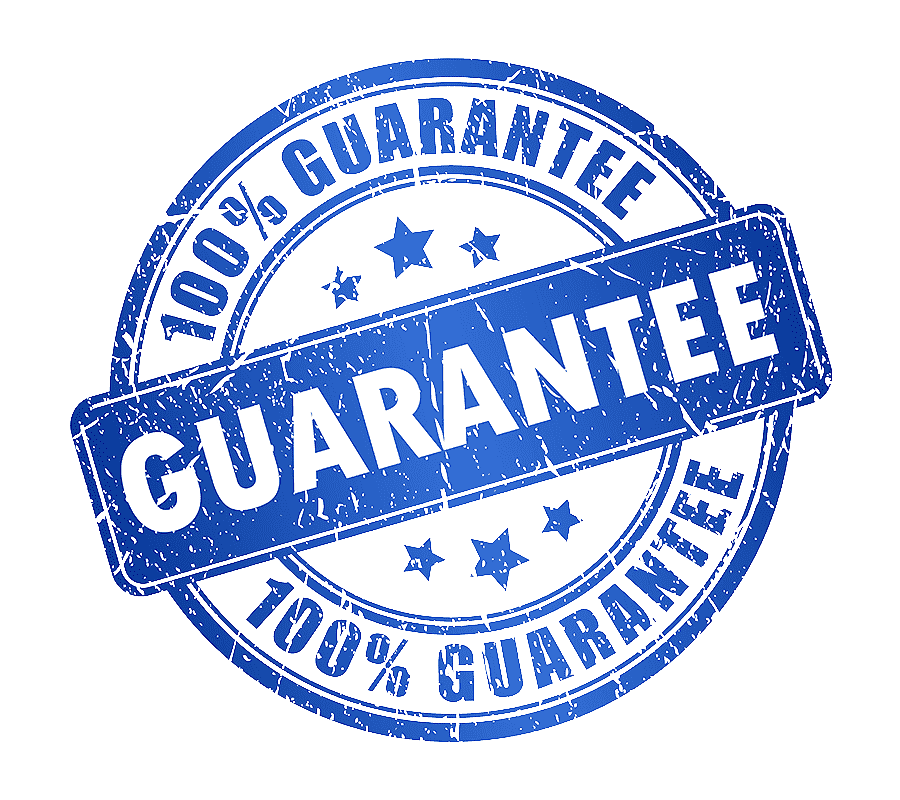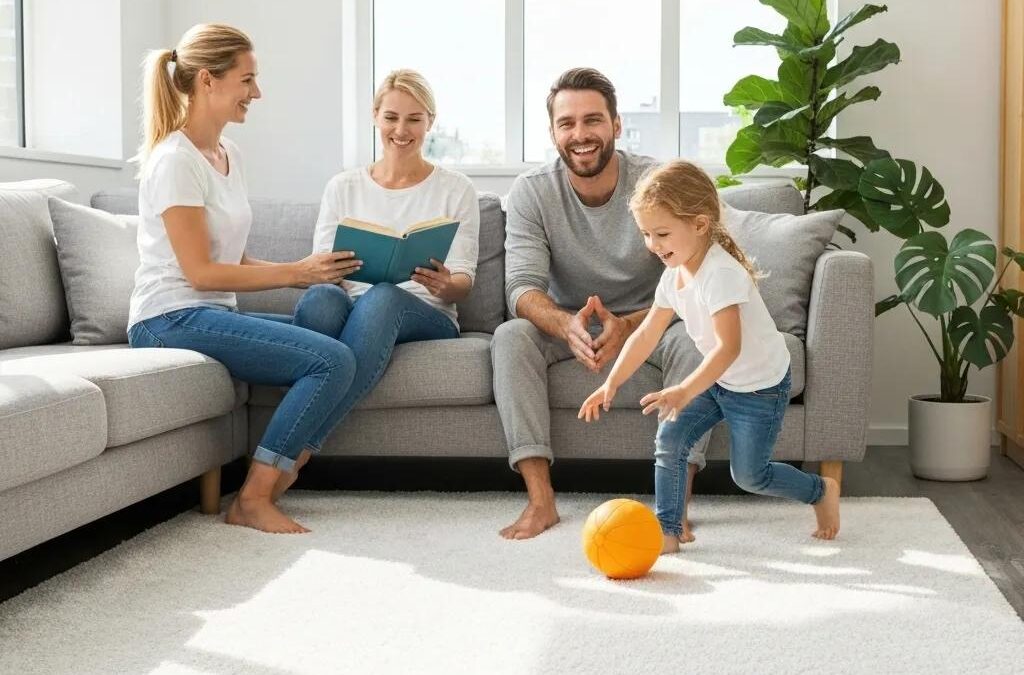Choosing a truly reliable carpet cleaning service is a critical decision for your Southern Nevada home or business. Carpets and upholstery are integral to the look, feel, and comfort of any space, from a bustling office on the Las Vegas Strip to a tranquil family home in Henderson or Summerlin South. Maintaining these valuable investments in the perpetually dusty, high-traffic Las Vegas Valley presents unique and complex challenges that go far beyond a simple surface clean. Improper or low-quality cleaning doesn’t just leave visible dirt behind; it can actively damage the fabric and fail to remove the persistent allergens, fine dust, and microscopic soil that settle in from the Mojave Desert air. The goal of professional carpet care is not merely appearance, but the preservation of fabric integrity and the profound improvement of indoor air quality. This educational approach ensures your flooring remains a functional asset rather than a liability in the desert climate.
The Mojave Desert’s Impact: Soil, Sand, and Allergens
The air quality and soil composition of the Las Vegas Valley directly affect the longevity and cleanliness of your carpets, creating a unique challenge that standard cleaning protocols often fail to address. The region’s environment is characterized by pervasive, fine, and abrasive dust. This dust, often containing hard, crystalline elements like silica and calcium compounds, is the primary enemy of carpet fibers. When tracked inside—a daily reality in the Southern Nevada climate—this fine grit acts like microscopic sandpaper, settling deep within the carpet’s base and, under the pressure of foot traffic, grinds against the fibers. If not professionally removed, this fine soil accelerates wear, permanently dulling the carpet’s appearance, and significantly shortening its lifespan.
Furthermore, a common pitfall in amateur or low-quality professional cleaning is rapid re-soiling. Many services use harsh, high-pH chemical detergents but fail to follow up with a proper, neutralizing rinsing agent. This oversight leaves behind a sticky, tacky chemical residue in the carpet pile. In a dry, dusty environment, this residue acts as a powerful magnet for airborne fine dust, causing the carpet to look dirty again just weeks after the cleaning was performed. This frustrating cycle not only wastes money but makes the consumer doubt the efficacy of professional cleaning altogether. A true professional understands the precise chemistry required to combat the high-alkaline desert soil and address the specific low-humidity drying conditions of Southern Nevada, ensuring the carpet is left completely residue-free.
The Carpet as an Air Filter: A Focus on Health
Beyond aesthetics, carpets serve as essential filters for your indoor air quality, which is a critical concern in a dusty environment. They trap not only fine desert dust but also common local allergens, pet dander, dust mites, and even mold spores if any moisture is present. For residents across the valley, especially those in areas prone to seasonal dust storms, a professional, deep clean is an absolute necessity for maintaining a healthy indoor environment. The deep extraction process removes these embedded contaminants, providing tangible relief for allergy and asthma sufferers. Regular, high-quality cleaning, therefore, is an investment in both the home’s appearance and the occupants’ respiratory health. The relationship between your carpets and your HVAC system is also critical. Your central air and heating system constantly circulates air, pulling pollutants back out of the air and depositing much of the residual particulate matter back into the carpet fibers, reinforcing the need for routine, thorough cleaning that a standard vacuum simply cannot achieve.
The Scientific Methodology: A Look at Professional Procedures
When seeking a truly reliable service, the most important factor is the methodology and technical training of the technicians. The effectiveness and longevity of a clean rely on the sophisticated application of chemistry, physics, and powerful equipment. The industry standard, recommended by the majority of carpet manufacturers and certifying bodies, is the Hot Water Extraction (HWE) method.
- Comprehensive Pre-Inspection and Fiber Identification: Before any water or chemical touches the carpet, a professional technician conducts a detailed pre-inspection. This is a crucial diagnostic step where the technician identifies the specific carpet fiber type (e.g., resilient Nylon, soft Polyester, moisture-resistant Olefin, or delicate Wool). Each fiber type dictates the precise water temperature, cleaning chemistry (pH level), and pressure that can be safely used. The technician also identifies high-traffic patterns, pre-existing damage, and determines the nature and classification of various spots and stains to apply the correct pre-treatment.
- Dry Soil Removal (Pre-Vacuuming): Professional cleaning must always begin with an intensive dry vacuuming using a high-filtration commercial vacuum. As much as 80% of carpet soil is dry particulate matter. Removing this abrasive desert soil before wetting the carpet is essential to prevent it from turning into mud and being ground deeper into the fibers during the cleaning process.
- Pre-Conditioning and Dwell Time: A specifically formulated cleaning solution (a pre-spray or pre-conditioner) is applied to the carpet. This solution contains surfactants and emulsifiers tailored to the fiber and soil type, which work to loosen and suspend the dirt particles from the carpet fibers. The necessary “dwell time” (allowing the solution to sit for a few minutes) is critical to give the cleaning agents time to dissolve the embedded desert dust and oily soils before extraction begins.
- High-Power Extraction and Rinse: This is the core of the HWE method. A truck-mounted system is vital in Southern Nevada, as these units deliver significantly higher heat and 200 and vacuum lift than portable machines. Heated water and solution are injected under pressure to flush the suspended soil from the fibers. The immense vacuum power immediately pulls the water, dissolved soil, and cleaning agents out of the carpet and into a waste tank on the truck. This powerful extraction is what prevents over wetting and minimizes drying time—a key concern in a desert climate where poor airflow can lead to microbial growth.
- The Critical Neutralizing Rinse: To prevent the aforementioned rapid re-soiling, the final step in the HWE process is the application of a neutralizing rinse. This solution, often slightly acidic, flushes out any remaining alkaline detergent residue, leaving the carpet fibers soft, clean, and—most importantly—residue-free. This practice ensures your carpet stays cleaner for a longer duration, maximizing your investment in the service.
Specialized Treatments: Pet Odor, Protection, and Grooming
Effective carpet care often requires specialized post-cleaning treatments tailored to the home’s unique needs.
Odor Remediation
Odors, particularly those from pet urine, present a unique challenge because the source contamination (urine salts, or uric acid crystals) often penetrates the carpet backing, the padding, and even the subfloor. Surface cleaning alone is ineffective for anything more than mild odors. A professional service utilizes advanced methods:
- Enzyme Treatments: Specialized enzymatic cleaners are applied directly to the contaminated area. These solutions contain beneficial bacteria that literally digest the organic waste molecules that cause the foul odor. This treatment requires significant dwell time to break down the contamination completely.
- Sub-Surface Extraction: For deep pet contamination, technicians use tools like the Water Claw or similar sub-surface extraction tools. These attachments seal off an area and use the truck-mount’s powerful vacuum to pull flushing water and enzyme solutions up through the carpet, padding, and out of the subfloor, removing the source of the odor rather than just masking it.
- Ozone Generation: For pervasive odors throughout a structure (such as heavy tobacco or smoke residue), ozone purification may be utilized. This process involves using specialized equipment to generate ozone gas ($\text{O}_3$), which chemically reacts with and neutralizes odor-causing molecules in the air and on surfaces. This method, however, requires the area to be professionally sealed and vacated during treatment.
Fiber Protection (The Reapplication of Safeguard)
Most new carpets come factory-treated with a protective fluorochemical coating (such as those commonly known by brand names like Scotchgard or Teflon). This coating creates an invisible barrier around the carpet fibers that helps repel liquid spills, slow down the penetration of dry soil, and improve vacuuming effectiveness. Unfortunately, this mill-applied protection wears off over time—due to foot traffic, abrasion from desert soil, and even previous aggressive cleaning.
Reapplying a professional-grade carpet protector after a deep clean is not just an add-on; it is an essential maintenance step. It extends the life of your carpets by reducing the rate of fiber wear caused by abrasive soil. It gives you more time to clean up spills before they become permanent stains, and it ensures that your next professional cleaning will be more effective, as the soil will release more easily from the protected fibers.
Why Does Professional Cleaning Extend My Carpet’s Warranty?
Carpet manufacturers, such as Shaw and Mohawk, tie their carpet warranties directly to maintenance schedules. They understand that a high percentage of fiber wear is caused by the abrasion of embedded dry soil (like the desert grit) and the failure to remove sticky residues. To honor a warranty claim, manufacturers typically require proof of professional cleaning by a certified technician (IICRC) at specified intervals, usually every 12 to 18 months.
The educational key here is two-fold:
- Prevention of Premature Wear: The manufacturer knows their carpet will degrade faster if the abrasive soil isn’t removed by high-powered professional equipment. By requiring HWE cleaning, they ensure the damaging particles are thoroughly flushed out, slowing down fiber damage and protecting their investment (and yours).
- Residue-Free Requirement: Uncertified or low-quality cleaning that leaves behind soapy residue can technically void a warranty because the residue accelerates re-soiling and fiber damage. Choosing an IICRC-certified professional ensures the correct, residue-free rinsing procedure is followed, keeping your warranty valid. In essence, meeting the manufacturer’s cleaning requirement is simply part of being a responsible carpet owner.
How Often Should I Professionally Clean My Carpets in Las Vegas?
The recommended cleaning frequency is directly tied to the level of traffic and the environmental factors unique to the Las Vegas area. Unlike other regions, the constant influx of fine desert particulate matter means that even low-traffic areas require attention.
- Standard Household (1-2 People, No Pets): We recommend professional cleaning every 12 to 18 months. This timeframe ensures that the mill-applied protector is maintained and that abrasive soil is removed before it can cause noticeable, permanent damage to the fibers.
- High-Traffic/Pet Households (Families, Dogs, Rental Properties): Cleaning every 6 to 12 months is strongly advised. Pets and children introduce higher levels of oils, dander, and liquid spills. The shorter cycle is necessary to manage these contaminants, especially to address potential urine spots before the odor penetrates the subfloor and requires costly sub-surface treatment.
- Commercial Properties (Offices, Retail): Depending on foot traffic, cleaning should occur every 3 to 6 months. Commercial carpets are often designed to hide soil, but they accumulate it rapidly. Frequent deep cleaning protects the substantial financial investment and maintains a professional image. The cost of frequent cleaning is always less than the cost of premature carpet replacement.
Why is Fiber Identification So Important for Cleaning Results?
Identifying the carpet fiber type is the foundation of professional carpet care. Without knowing the fiber, a technician cannot safely select the right cleaning chemistry, temperature, or pressure. Applying the wrong chemistry can lead to permanent damage, known as a permanent color loss or fiber distortion.
- Nylon and Polyester: These synthetic fibers are durable and can typically withstand the high heat and moderate alkalinity of standard cleaning solutions, which are often necessary to break down synthetic oils and heavy soil.
- Olefin (Polypropylene): This fiber is highly resistant to water-based stains but is sensitive to heat and easily distorted. It is also highly “oleophilic” (oil-attracting), requiring specialized solvent-based cleaning agents for greasy spills. Using excessive heat can actually melt or permanently deform the fibers.
- Wool: This is a natural, protein-based fiber that is highly susceptible to damage from high pH(alkaline) chemicals and excessive heat. Cleaning wool requires low-temperature, near-neutral solutions to prevent permanent yellowing, browning, or even fiber degradation. A professional who skips the fiber test risks destroying a valuable wool rug with a standard synthetic cleaning solution.
What are the Dangers of Over wetting the Carpet?
Over wetting is a common mistake made by inexperienced or poorly equipped cleaners (often those using rental or portable machines). In the desert environment, where homeowners are eager for a quick dry, over wetting can lead to severe and costly issues that undermine the entire cleaning effort.
- Mold and Mildew Risk: While the Las Vegas climate is dry, moisture trapped below the carpet backing creates a perfect breeding ground for mold and mildew. This growth can start within 24 to 48 hours and poses a serious health risk, often requiring costly remediation.
- Wicking and Stains: When the carpet and padding are soaked, the dirty water (and dissolved contaminants from the padding or subfloor) can wick up the fibers as the carpet dries. This results in the reappearance of spots or stains days after the cleaning is finished, creating unsightly brown or yellow marks that were not visible immediately after the job.
- Separation of Backing: Severe, repeated over wetting can damage the adhesive latex that holds the primary and secondary backings of the carpet together. This damage leads to delamination, causing bubbles, ripples, and wrinkles in the carpet that necessitate expensive re-stretching or replacement.
A highly skilled technician prevents over wetting by meticulously controlling water flow and using the superior vacuum lift of a truck-mounted unit to ensure maximum moisture extraction, leaving the carpet damp, not soaking wet.
What Sets The Carpet Monkeys Apart? A Localized Approach
A local company like The Carpet Monkeys is uniquely positioned to address the specific needs of the Las Vegas Valley because their expertise is built upon years of regional experience. They understand the localized environmental pressures on your home, from the pervasive fine dust to the specific challenges of water use in a low-humidity climate.
- Tailored Solutions: Local experts are experienced in handling the diverse range of flooring found locally, from fine wool rugs in luxury homes near Red Rock Canyon to robust nylon in high-traffic commercial settings. They can accurately identify the fiber type and choose the safest, most effective cleaning agent and water pressure for that specific material.
- Commitment to Training and Certification: The Carpet Monkeys invest in their staff, ensuring technicians hold professional certifications like the IICRC designation. This certification signifies an adherence to rigorous, science-backed cleaning standards, giving you confidence that their competence is recognized by the global cleaning and restoration industry.
- Full Service & Peace of Mind: Beyond technical skill, a trustworthy local provider offers full liability and worker’s compensation insurance, protecting you in case of accidents. Critically, they back their work with a satisfaction guarantee. This promise to re-clean any unsatisfactory areas demonstrates a genuine commitment to local customer care and confidence in their results.
The Carpet Monkeys‘ approach is centered on educating the client and delivering a comprehensive, residue-free clean. By partnering with a knowledgeable, certified local professional, you move beyond mere surface cleaning. You are investing in a practice that significantly extends the useful life of your carpet, protects your family’s health from embedded allergens, and ensures your space maintains a clean, fresh appearance that lasts.





